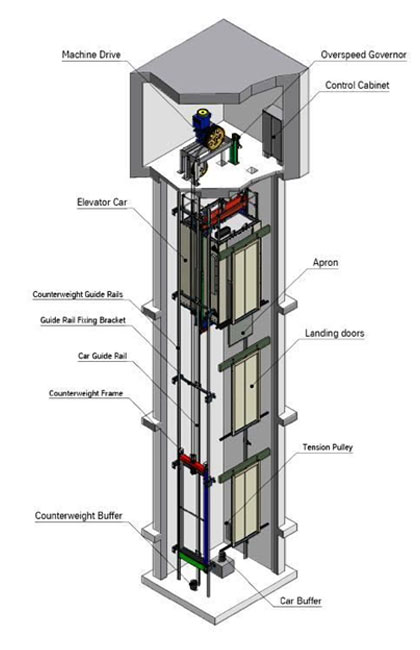Contrast Disabled Platform Lifts Prices UK: Affordable Options for each Need
Contrast Disabled Platform Lifts Prices UK: Affordable Options for each Need
Blog Article
Delving Into the Globe of Lifts: Typical Problems Faced by Different Lift Systems
As we navigate with the vertical transport systems of contemporary structures, elevators stand out as an important component of our everyday lives. From hydraulic lifts to grip systems and machine-room-less designs, each lift kind comes with its collection of usual problems.
Hydraulic Lifts
Hydraulic lifts, usually chosen for low-rise buildings, utilize fluid stress to control the activity of the lift vehicle (lift repair companies). This mechanism includes a hydraulic pump pushing oil right into a cyndrical tube, creating the elevator to relocate the desired instructions. While hydraulic elevators are understood for their peaceful and smooth operation, they do include their very own set of typical concerns
One widespread problem with hydraulic elevators is oil leakage. In addition, issues with the control system, such as faulty shutoffs or a malfunctioning pump, can create interruptions in the elevator's movement.
Routine maintenance and timely repair services are important to make sure the smooth performance of hydraulic elevators. By resolving these common issues proactively, structure proprietors can decrease downtime and make sure the security and efficiency of their upright transport system.
Traction Lifts
When thinking about vertical transport systems in buildings, another usual type aside from hydraulic elevators is the grip elevator. Grip lifts operate making use of a system of ropes and counterweights that move the lift cars and truck by gripping onto the hoist ropes. This mechanism permits smoother and quicker upright transport compared to hydraulic systems.
Among the common concerns faced by grip elevators is rope wear. The consistent motion of the ropes within the grip system can cause damage over time, possibly triggering the elevator to breakdown or become dangerous for use. Routine inspections and upkeep of the ropes are important to guarantee the lift's proper functioning and safety and security.
Another problem that grip lifts may encounter is associated with the control system. Troubles with the control system can result in concerns such as irregular motion, delays in reaction times, or also complete shutdowns. Routine screening and upkeep of the control system are crucial to stop such concerns and ensure the elevator's dependability.
Machine-Room-Less (MRL) Lifts

Among the crucial components of MRL lifts is the small gearless grip machine that is set up within the hoistway. This device successfully drives the elevator vehicle without the demand for large tools discovered in conventional traction lifts. Additionally, MRL lifts generally make use of a counterweight system to stabilize the automobile, further boosting their energy effectiveness.
Regardless of their advantages, MRL lifts may deal with obstacles connected to maintenance and fixing due to the restricted area for equipment setup. Access for servicing components within the shaft can be limited, requiring specialized training for service technicians. Correct upkeep schedules and routine examinations are crucial to guarantee the continued smooth operation of MRL my latest blog post elevators.
Overloading and Weight Limitation Issues
Are lifts outfitted to deal with excess weight tons successfully and securely? Straining and weight restriction concerns are critical concerns in elevator operations. Lift suppliers design lifts with details weight capacities to ensure passenger safety and security and equipment longevity. Exceeding these weight restrictions can bring about numerous troubles, consisting of mechanical failings, hold-ups, and safety and security threats.
When lifts are overloaded, it places extreme strain on the electric motor, wires, and various other parts, possibly triggering failures or malfunctions. Security mechanisms such as sensing units and overload sensing units remain in place to stop lifts from moving if they detect excess weight. Additionally, going beyond weight limitations can lead to boosted energy intake and wear and tear on the lift system.
To reduce straining issues, constructing managers must prominently present weight limits in lifts and educate passengers on the significance of sticking to these restrictions - lift repair companies. Regular maintenance checks by qualified specialists can additionally help make certain that elevators are running within secure weight specifications. By addressing overloading and weight limitation concerns proactively, structure owners can improve lift safety and performance
Electrical System Failings
Going beyond weight limits in lifts can not just lead to mechanical issues however likewise possibly add to electrical system failures within the lift facilities. Electric system failings are a crucial issue in lift operation, as they can trigger straight from the source unanticipated closures, breakdowns, or even safety dangers. One typical electric concern is the overheating of components because of extreme present circulation brought on by straining the lift past its ability. This can bring about harm to the wiring, control, or motor systems, leading to expensive repair work and downtime.
Moreover, power rises or changes in the electrical supply can also interfere with the lift's operation, impacting its performance and security. These electric disturbances can harm delicate elevator parts such as control board, motherboard, or sensing units, causing system failures. Normal maintenance and evaluations are essential to recognize and attend to potential electric problems promptly, making certain the reliable and safe procedure of elevator systems. By sticking to weight limitations and conducting regular electrical system checks, structure owners can minimize the risk of electric failures in lifts.
Final Thought

Hydraulic lifts, typically preferred for low-rise structures, use fluid stress to manage the movement of the elevator automobile.When taking into consideration vertical transport systems click over here now in structures, an additional usual kind apart from hydraulic elevators is the grip lift. Grip lifts run utilizing a system of ropes and counterweights that move the lift automobile by gripping onto the hoist ropes. Unlike traditional elevators that need a different maker space to house the equipment, MRL elevators integrate many of the parts within the shaft, eliminating the demand for a specialized maker space.In conclusion, lifts deal with common problems such as hydraulic breakdowns, traction system failures, and electrical system issues.
Report this page